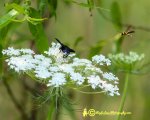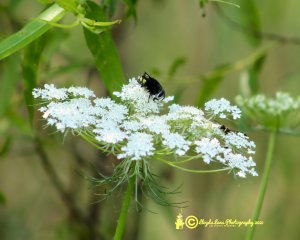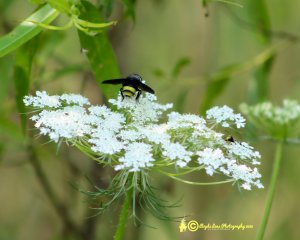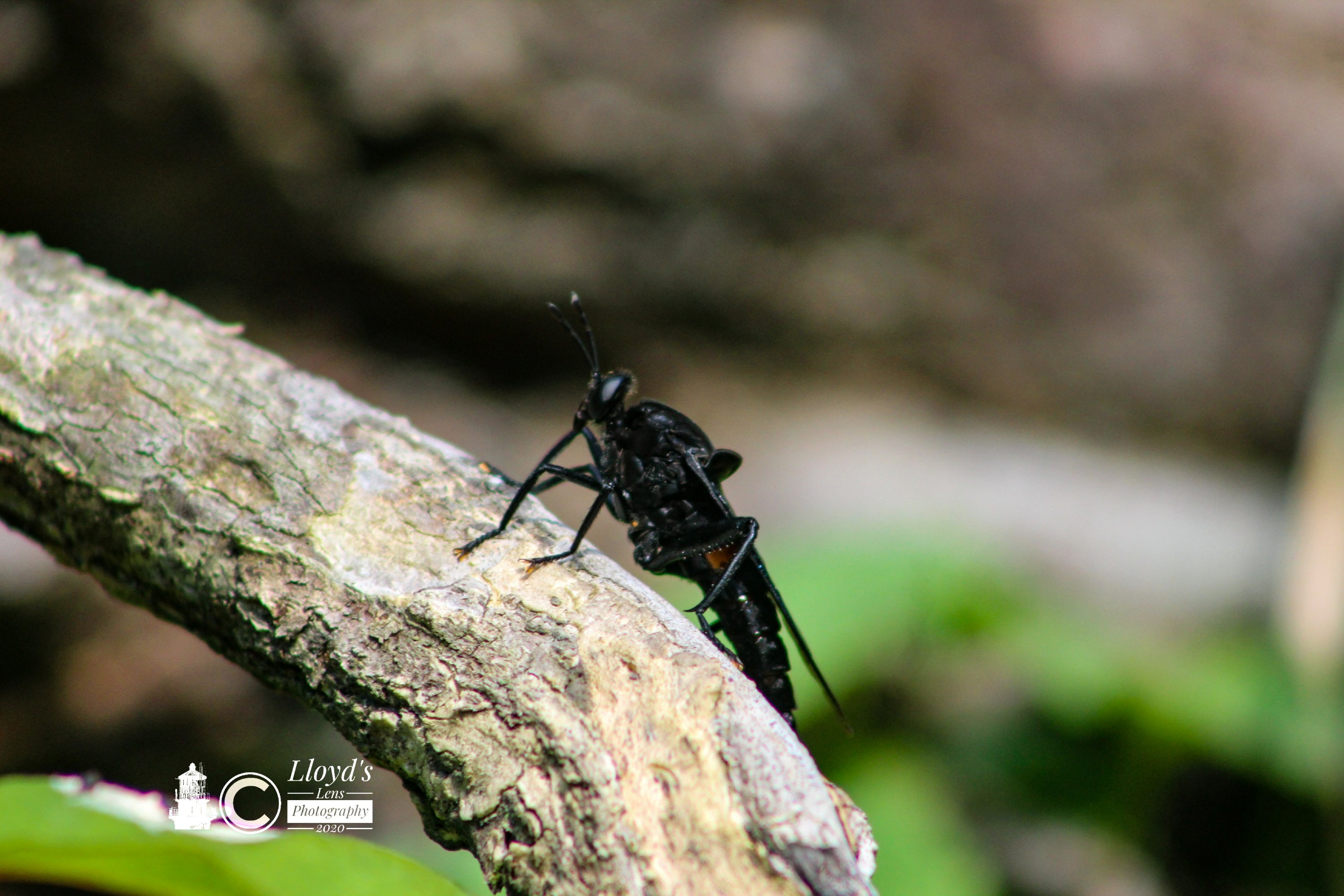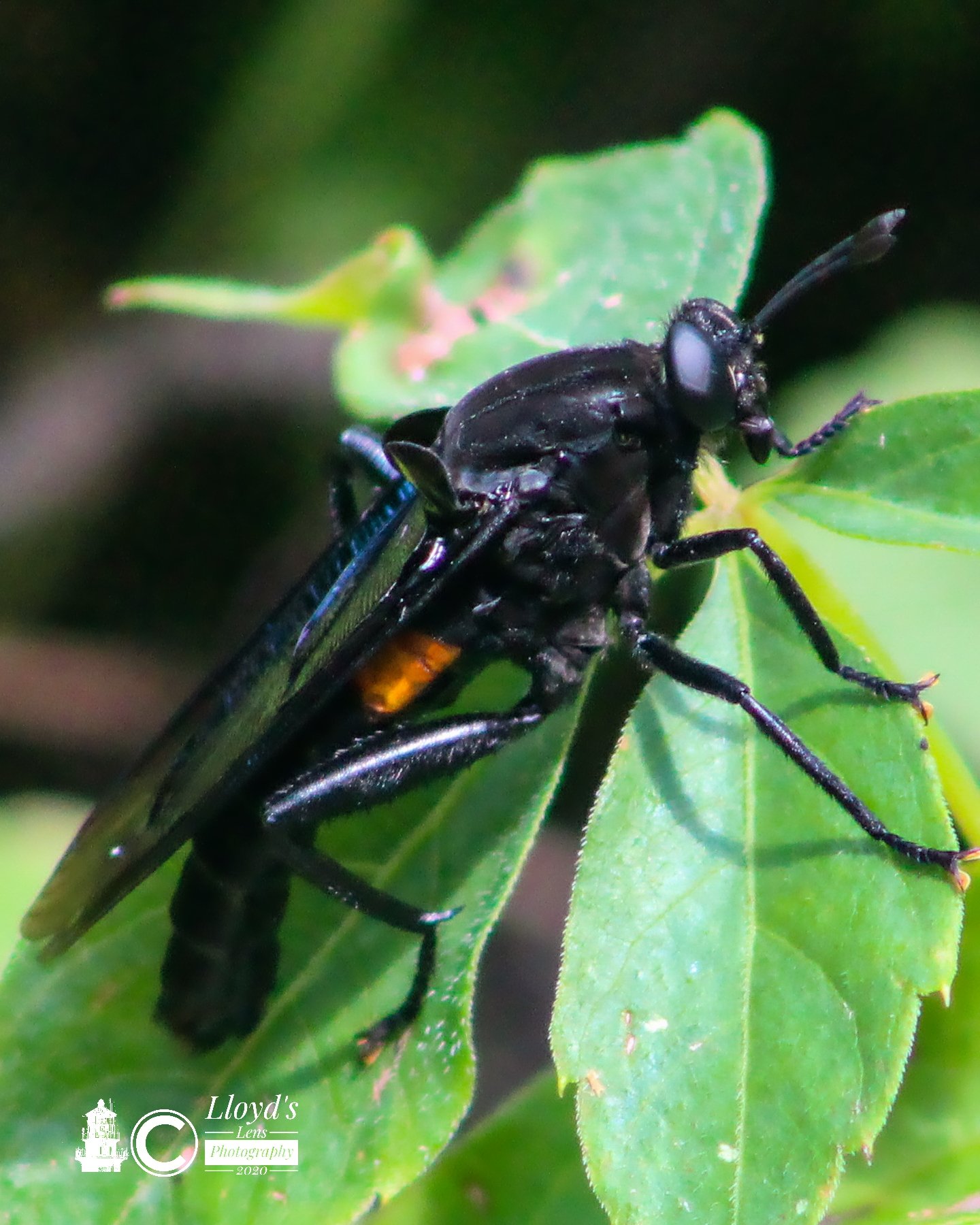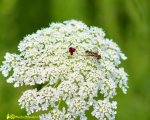
Hardly a summer goes by that I don’t notice the tiny little bee-like hoverfly trying to land on me without being seen. Other times they’ll float in mid air about an inch or so above my skin as if waiting for clearance to land. They’re interested in my salt of course. Like butterflies they need salt to reproduce and humans in the Southern sun tend to have a treasure trove of salt available in their sweat. I normally allow them to get what they need. As a child I was pretty scared of bees and the hoverfly was just another bee to me until Mt grandfather pointed out that it’s just a fly without a sting and you could see its little red tongue licking like a dog. The comparison to a puppy and trust in my grandfather was enough to calm my fears and I became fascinated with the hoverfly. Like the Tachinid flies these little guys are beneficial flies. But they’re not Tachinid flies. They’re in the Syrphid fly family. As adults the hoverflies sip nectar and transfer pollen. And while they don’t carry the payload of a bee they make up the difference by visiting more flowers per flight. Some hoverflies are also predators in the maggot stage and feed on the larvae of aphids while others assist in composting. The rattailed maggot is a type of hoverfly that has a built-in snorkel and is found in the messy end of the barnyard for obvious reasons.
But back to pollination. There’s actually not a lot of research being done on the hoverfly as a pollinator. It’s known that a Chinese variety is the main pollinator of the slipper orchid in Southwest China which leads me to think that our own pink lady’s slipper orchid may have a similar relationship with our native hoverfly. If anyone knows this for sure drop a comment below. The hoverfly is a generalist when it comes to pollination. In tonight’s Feature Image it was found on Queen Anne’s Lace right next to the Belvosia Borealis fly that I covered last night. There’s actually about six thousand species of hoverfly in the world that act as pollinators in their adult stage and I’m not sure which specific hoverfly I have here but I do know that they make me smile when I see them.
Good night friends and be blessed throughout your days.
Announcement 2.0
For those who have been following me on Facebook and know of the struggle content providers have to get circulation from big tech I’ve been recommending for people to adopt MeWe as a social media platform. One of the problems I’ve run into on MeWe is that people don’t know how to navigate the platform. So to help with that I’ve created a permanent page on my website as a basic Basic Beginner’s Guide To MeWe I’ve tried to anticipate all basic questions there and You can bookmark the page to have as a reference and if you have any questions or suggestions don’t hesitate to contact me. I do still have a day job and I help admin several pages on both platforms so replies might be a little slow but I will answer you.
We also have the Lloyd’s Lens Photography Discussion Group on MeWe that is set up as a fully functional community. There you’ll not only be able to see and connect with me but you can also make your own posts and interact with each other.
I want you to join my group on MeWe: https://mewe.com/join/lloydslensphotographydiscussiongroup

Click the link below to jump to the Basic Beginner’s Guide To MeWe.https://lloydslensphotographyllc.com/guide-to-mewe/embed/#?secret=GJGnIQEVHc
Hey Friends! Just a quick reminder that Lloyds Lens Photography is available for portraits!

To book me simply reach out using the Contact Page and we’ll set a date. If you’re within a 50 mile radius of Summersville West Virginia all travel fees are waived.
If you’re enjoying my blog and don’t want to miss a post then you can sign up for email alerts on my website.
https://lloydslensphotographyllc.com/embed/#?secret=ZBipPVJdZw

Have you checked out the Zazzle Store?
I’m now using Zazzle to fulfil orders. What this means for you is a secure way to place an order, discount codes & a broader product selection! Simply use the contact form on my websiteand tell me which image you want and I’ll reply with a direct link to where you can place the order.




